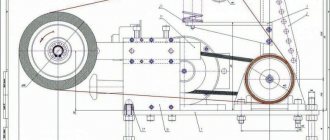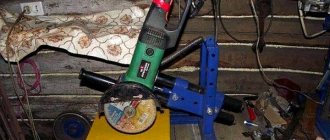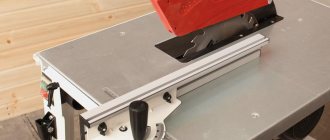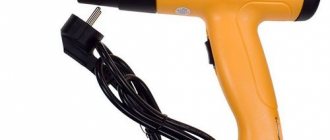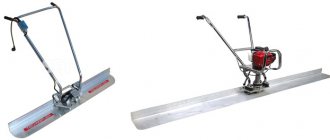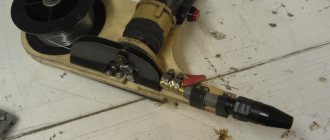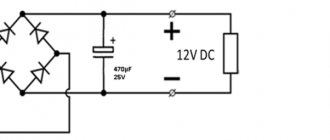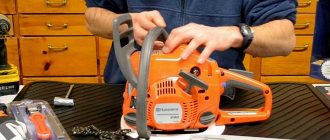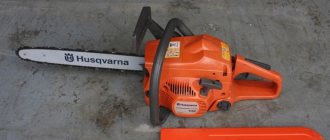Scaffolding elements
The main elements of the scaffolding are:
- Racks.
- Spacers (diagonally and horizontally) give the scaffolding strength in several directions at once.
- Jumpers between floorings.
- Supports for creating forest stability.
- Flooring made of wood or metal, the width of which must be strictly more than 1.5 m. The gap between the boards should not exceed 10 mm. When forming a continuous flooring, it is recommended to lay the boards overlapping.
- Safety beams to prevent workers from falling.
- Stairs to reach the next level.
- A façade network that wraps around the installation structure helps protect passers-by from sudden falling material, and construction personnel from falling.
Classification of auxiliary structures
A general division of scaffolding involves offering two large groups of devices on the market, their main feature is the material of manufacture, it can be wood or metal, in turn there are several types of metal devices:
Crossbars. Massive, metal-intensive devices, characterized by increased reliability and stability combined with the ability to withstand heavy loads. When folded, they are quite compact, which makes them convenient for transportation and storage.
Wedge-clamp. Lightweight and mobile, such devices are excellent for external and internal work at sites with characteristic altitude differences. Their side frames, made in the form of stairs, provide easy access to the work site and accommodate several people on it.
Frame. All frame elements are interconnected horizontally and vertically, which ensures optimal reliability and practicality of the entire structure. A simplified flag mechanism helps save time when assembling and dismantling frames made of durable materials with reduced metal consumption.
For private use in the process of carrying out independent construction and repair activities, frame scaffolding is used, which is characterized by ease of assembly and ease of operation, saving free space during storage.
Classification of scaffolding
- Based on the type of frame, they are divided into: walk-through (for personnel movement) and staircase (vertical movement of personnel).
- By type of connection: horizontal and diagonal (considered the most reliable).
- For fastening to the facade of the building: disposable (dowel fasteners are adjusted to the walls) or anchor (easily removed from the facade when moving mounting structures).
- According to the decking material: perforated steel decking is ideal for massive loads, and wooden decking is perfect for personnel movement. Combined flooring is widely used.
Scaffolding by installation method:
According to the method of installation (installation) and transportation, scaffolding is divided into:
- hanging,
- attached,
- self-elevating,
- self-propelled,
- graduations and others.
Sometimes such structures are necessary to maintain in the desired position some parts of construction projects that do not yet have sufficient stability, being in the construction stage and not having full and reliable support: shells made of reinforced concrete or monolithic concrete, road bridges and overpasses, various decorative or functional bricks arches and other objects.
Modular scaffolding is installed individually; their main distinguishing element is the stand and flanges, which help to reliably connect vertical structural elements with each other at various selected and fixed angles. Modular scaffolding is most often used when servicing architecturally complex construction projects (for example, entertainment complexes) or arranging stages for any events.
Tower tours
Tower towers are actively used in cases where finishing of relatively small areas of facades, installation or maintenance of ventilation systems, repair and finishing work inside the building and cleaning work are required. At their core, they can be called an alternative to scaffolding if we are talking about a less complex and more mobile structure with similar functions. Unlike façade scaffolding, repositioning such structures does not require dismantling the entire system.
In order not to make a mistake in renting scaffolding, it is recommended to immediately order mobile, free-standing towers , which are used to locate working personnel and building materials directly in the construction zone, along with the main structures.
Frame scaffolding
The most common type of scaffolding is frame scaffolding. The design is very simple to assemble (metal frames secured with locks).
Inside the frame scaffolding there are floorings for personnel movement and flights of stairs.
At the heart of the frame scaffolding are supports.
- A simple type of support is represented by a non-adjustable pipe on a welded “heel” base.
- Currently, supports on wheels, which are easy to move from place to place, are widespread.
- To increase the reliability of the structure, a stiffening frame is created inside each frame when the beams are placed crosswise at the corners of the section.
The height of the building structure depends on the scale of the work and the height of the building being repaired.
Different types of scaffolding structures
First of all, it is worth noting that scaffolding is modular. The first ones include the so-called flag towers, tower towers, pin towers, and the second ones include wedge towers, suspended towers, system towers and clamp towers. Now let's look at these types of scaffolding in more detail.
Flag scaffolding
The design provides racks for horizontal as well as diagonal fastening of side frames. As a rule, the kit also includes a staircase in the form of a separate modular frame. These products are made of steel with a standard load of up to 200 kg/m2. It is worth noting that flag scaffolding is one of the most popular, as it is relatively inexpensive, as well as convenient and easy to assemble. The main area of application of these structures is installation and repair work on those buildings that have a straight façade.
How are flag woods collected?
- The first tier is assembled as follows: approximately every three meters, support boards are placed on them, and on top, so-called shoes, then frames are placed in them, which are eventually connected with ties and braces for strength.
- For the second tier, the frames are placed vertically, and then secured with both horizontal and vertical ties. Horizontal ribs are also installed for rigidity.
- Stairs are mounted vertically or at a slight angle.
- After completing the steps described above, the scaffolding is attached to the building using special fasteners in increments of up to four meters and in a checkerboard pattern.
- The third and subsequent tiers are fastened in the same way as the assembly process of the first and second tiers.
- At the end, end and longitudinal crossbars for the fence are installed.
Pin scaffolding
These scaffoldings consist of horizontal parts that are mounted by inserting pins into pipes, which, in turn, are welded to vertical posts. The lowest support posts are installed in the so-called shoes.
Each new tier of scaffolding is assembled in stages. The rigidity of the structure as a whole is ensured by diagonal braces. Most often, such scaffolding is used when carrying out any types of masonry work, while the maximum height of the entire structure is limited to 40 meters. The standard load on such scaffolding is absolutely the same as on flag scaffolding – up to 200 kg/m2.
Tower tour
If you need very quick installation of scaffolding, then a tower tower is ideal. The design is as simple as possible to assemble and can be easily moved from place to place.
Tower towers are made of frames with a ladder and a base to which wheels are mounted. This ensures high mobility of the entire structure. If it is necessary to install scaffolding at a height of more than 4 meters, the lower tier is reinforced with spacers. Such towers are attached to the building with special anchors. The maximum height of such scaffolding is 21 meters.
How are tower tours collected?
- The lowest frame with wheels is placed on a flat surface, and then the supports are pulled out on stands.
- Side frames with stiffeners are mounted to the base and secured with ties.
- The second and subsequent tiers are assembled in the same way as the first.
- On the last tier, the flooring is fixed, insurance is installed and horizontal partitions for the fences are installed.
Wedge scaffolding
Directly, these scaffoldings got their name thanks to steel wedges, which are designed to firmly fix the supports. This design is considered one of the safest and most reliable. Wedge scaffolding has a standard load of up to 300 kg/m2, and its maximum height can reach 40 meters. Most often, such structures are used in the aviation or shipbuilding industry.
Clamp scaffolding
It is believed that clamp scaffolding was one of the very first to appear, and their name comes from special clamps with the help of which all the components of the overall structure are connected. This type of scaffolding is quite difficult to assemble, but their maximum height can reach 80 meters with a standard load of 250 kg/m2.
Suspended scaffolding
There are cases when the architectural features of a building do not allow the installation of the types of scaffolding described above. Then the so-called suspended scaffolding, which is often used in restoration work, comes to the rescue. The supports in this case are the building floors themselves, into which the entire scaffolding structure is mounted. It is also worth noting that in terms of strength, suspended scaffolding is approximately identical to clamp scaffolding.
Modular or system scaffolding
Such scaffolding consists of galvanized pipes with a diameter of 48 mm, and the supports can be with a screw base, as well as with a square or wheel base. With the help of this type of scaffolding, it is relatively easy to assemble structures of various shapes. In this case, all components of the product are mounted either using wedge-disc or so-called cup fasteners. One of the features of the installation of system scaffolding is the presence of crossbars, which have a fork-shaped lock designed to communicate with the support disc lock. This mount is secured at the top with a wedge-shaped nut. The maximum height of modular structures can be up to 60 meters.
How to choose the required type of scaffolding?
To make an informed choice, you first need to understand what types of work will be performed, calculate their total volume and approximate time. The choice is also strongly influenced by the structural features of the building or object for which scaffolding needs to be installed.
For example, if the facade of a building has complex geometry, many balconies and projections, then clamp or suspended scaffolding would be the best choice.
If it is not possible to attach to the facade of the building at all, then wedge scaffolding will be the most reliable option.
If the construction site has a small height, then a tower tower may be suitable, but if the height of the object is significant, then you should think about using modular or, again, clamp scaffolding.
When choosing scaffolding, you should also not forget about the maximum load, because when working at any height, even small, the main task is to ensure the safety of workers.
Wedge scaffolding
Collapsible scaffolding is a universal structure designed for almost any type of work. The configuration of wedge scaffolding can be very diverse; the design is adjusted to the characteristics of the object being reconstructed.
The wedge fastening with support disc and permanent wedge makes the scaffold extremely durable. Among the “advantages” of the mounting scaffold, it is worth noting the ease of assembly, which does not require any work experience from the staff.
Wedge scaffolding is successfully used in shipbuilding, in the oil and gas industry, when making heavy stone masonry, and for assembling podiums and stands. Wedge scaffolding is ideal for restoration work on facades. The design is lightweight, so it does not cause damage to the structure.
What materials do I use for scaffolding?
The oldest type of scaffolding material is wood. Although from the point of view of technological development the use of this material for this type of work is outdated, wooden scaffolding is still used. For example, most often for finishing private houses and low buildings.
Metal scaffolding is the most modern and effective solution for the renovation of buildings of any type. The structures are sold in various sets and configurations, and their main advantage is lightness, mobility, strength and durability. An ideal option when you need to quickly carry out any finishing or repair work in the midst of urban development!
Pin scaffolding
A pinned scaffold is a temporary structure whose components are attached using hinges. This method, as well as reinforced pipes, make the structure as durable and reliable as possible.
- At an altitude of 80 m 1 sq.m. pin forest can withstand loads of up to 0.5 tons.
- The pin design is used when making masonry from heavy materials and repairing the facade of a building.
- The temporary structure is durable, installation is easy, which allows you to quickly change the location of the construction project.
Scaffolding – their scope of application
Scaffolding has the main scope of application such as performing external work: installation of brickwork, facade systems, painting or laying insulation, and work on port docks, for installing window sills, when carrying out capital or restoration work, installation of stage decorations, when installation of advertising structures.
Scaffolding is also quite often used when performing interior work: painting ceilings and walls, plastering walls, carrying out various utilities at heights, installing lighting devices and much more. It is clear that each of these jobs requires slightly different scaffolding.
Khomutovye scaffolding
The elements are connected using clamps, which allows the construction of a durable and reliable structure with increased functionality.
Professionals use clamp installation structures when laying heavy materials at a height of no more than 20 m, when carrying out installation work on the facade of a building if the height of the structure is less than 80 m, as well as when repairing architectural structures of non-standard configuration or objects located on a slope.
Stages and stands are also built using clamp scaffolding. The metal structure can be easily combined with other types of scaffolding, but you need to remember that the clamp scaffolding does not move. The scaffold posts are assembled using crossbars attached across the structure to the walls of the building.
How to make a choice
When choosing scaffolding, it is necessary to take into account all the factors present on the construction site. Let's give some recommendations:
- for high heights - suspended, wedge, pin, clamp;
- for low objects - frame models;
- domes, facades of complex configuration, arches - clamp scaffolding.
When choosing scaffolding, be sure to take into account their cost, assembly time and standard load. Depending on the type of work, different types of structures can be used.
Useful articles about scaffolding:
- Scaffolding storage
- Safety precautions when using scaffolding
Suspended scaffolding
In situations where using the foundation as a support point is impossible, suspended scaffolding is erected. String structures are assembled when the structures being repaired are not durable or when working on bridges.
String scaffolding is used when working at heights of up to 100 m, as well as when glazing the facades of high-rise buildings.
The suspended scaffolding is based on a lightweight frame and rack elements connected by clamps (string ties). The forest is attached with brackets to the facade.
Attached (crossbar, pin)
The structure consists of racks with lugs into which vertical and horizontal parts are inserted. The fastenings are not bolts, but pins. They are fixed to the wall with hooks. The first row is placed with a mounting heel; upon completion of assembly, wood and metal flooring is placed on the work stations from the crossbar connections.
The main advantage is the load capacity of 250 kg per square meter. They are used as mason stands, installation of podiums, stages. They are suitable for capital construction, finishing and insulation of facades, indoors, and brickwork.
Pin scaffolding is convenient to install, store, and operate, but when working with complex shapes they are combined with other scaffolding.
Cup side scaffolding
Structures of this type are most often used to carry out work directly at the reconstruction site. Scaffolding is constructed using modular cup-type fasteners. In this case, diagonal stiffeners are not required. The number of forest elements remains minimal.
Professionals note the undoubted advantages of cup-type wood:
- High levels of strength and reliability.
- High rigidity values, which allows you to increase the load on the attached structure.
- Creation of spans up to 3 m long without loss of strength.
- Impact resistance.
- Fast assembly.
- Ability to create various flexible forms.
- The absence of unnecessary fittings simplifies installation and dismantling.
Choosing material for scaffolding
You can find aluminum, steel, wood and galvanized scaffolding. Choosing a material is easier than deciding on the type of construction. Aluminum scaffolding is, of course, lightweight, and mobility is its main advantage. Steel is a strong and durable material. Moreover, this alloy is easily repaired, which cannot be said about aluminum structures. Galvanized scaffolding is not only strong, like steel, but is also rust-resistant, making it ideal for façade work. The protective coating allows you to even store them outdoors.
Obviously, steel and galvanized structures will cost the most. Aluminum scaffolding, whose construction suitability is sometimes questionable, will be cheaper. Steel and galvanized material are also much heavier, so frequent transportation is impossible, but on such scaffolding, in addition to workers, you can also load a lot of material. So if you work a lot, on large and long-lasting projects, then aluminum scaffolding is not suitable for you. That is why they are rarely used in planned and large-scale construction; moreover, an expensive design made from more reliable materials quickly pays off, so they do not skimp on them.
All the scaffolding described above consists of metal parts. But we shouldn’t forget about their wooden predecessors. This type is the simplest to implement and competes with aluminum scaffolding on a private site. The main advantage is cost-effectiveness, because almost anyone can make them, on their own and almost from scrap materials, if, of course, there is a forest nearby.
But this design is quite cumbersome, and after work it needs to be stored somewhere; in this regard, it is more profitable to have aluminum scaffolding. Of course, the wooden structure can also be disassembled, but the boards can hardly be used anywhere else. They will get dirty and pricked with nails. In addition, homemade scaffolding is suitable for carrying out work at the maximum level of the second floor, however, in private construction more is not needed.
Wood jack
It is used in situations where it is not possible to place the scaffold on a flat platform. Stabilizer jacks level the structure relative to the zero support point. The jacks are easy to use, the mechanisms are reliable and durable.
Wedge
Components - verticals, decks, stairs, diagonal and horizontal parts. All elements are connected by a wedge, which is where the name comes from. The vertical part is a pipe with a round flange with a hole, the horizontal part is a pipe with a holder at the end. The holder has a hole, a wedge. The diagonals are made of pipes with flattened ends and swivel holders with a wedge.
Able to withstand workers, building materials, equipment. They are used in repairs, construction of buildings, ships, wall decoration, bricklaying, organizing stage areas, as a stand for formwork, and restoration work.
Scaffolding selection
For each building reconstruction project, a scaffolding project is created, where the loads and the number of connecting parts are calculated in detail. Many factors influence the choice of scaffolding: the height of the object, the weight of the materials, the required span length.
Configurations of mounting scaffolding are regulated by GOSTs.
The calculation takes into account flights of stairs and the number of floorings. Taking into account all the data, it is easy to assemble a scaffolding of the desired configuration with the required load indicators.
HOW TO CHOOSE SCAFFOLDING - DETERMINE:
- What kind of work is required - cladding, masonry, installation - from this we select the permissible height.
- The type of building and the complexity of its shape will help determine the type of scaffolding.
- What load will be placed on the structure?
- How many prefabricated elements are required, you can calculate them using special calculators or contact a scaffolding company - this way you will understand the price segment.
- How the scaffolding is assembled will determine whether it is necessary to hire a person to assemble it correctly.
If you have a small budget, you can rent scaffolding or purchase used scaffolding at a reduced price.
